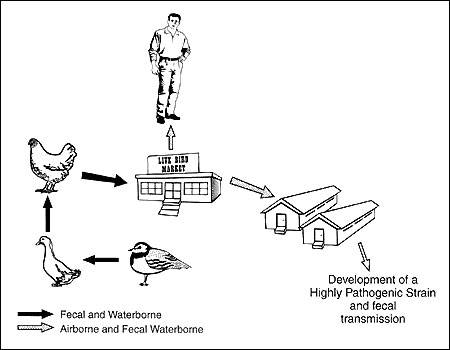Volume 4, Number 3—September 1998
THEME ISSUE
ICEID 1998
Zoonotic and Vector-borne Issues
Influenza: An Emerging Disease
Figure 2

Figure 2. The emergence of H5N1 influenza in Hong Kong. It is postulated that a nonpathogenic H5N1 influenza spread from migrating shorebirds to ducks by fecal contamination of water. The virus was transmitted to chickens and became established in live bird markets in Hong Kong. During transmission between different species, the virus became highly pathogenic for chickens and occasionally was transmitted to humans from chickens in the markets. Despite high pathogenicity for chickens (and humans), H5N1 were nonpathogenic for ducks and geese.
Page created: December 14, 2010
Page updated: December 14, 2010
Page reviewed: December 14, 2010
The conclusions, findings, and opinions expressed by authors contributing to this journal do not necessarily reflect the official position of the U.S. Department of Health and Human Services, the Public Health Service, the Centers for Disease Control and Prevention, or the authors' affiliated institutions. Use of trade names is for identification only and does not imply endorsement by any of the groups named above.